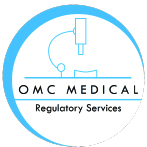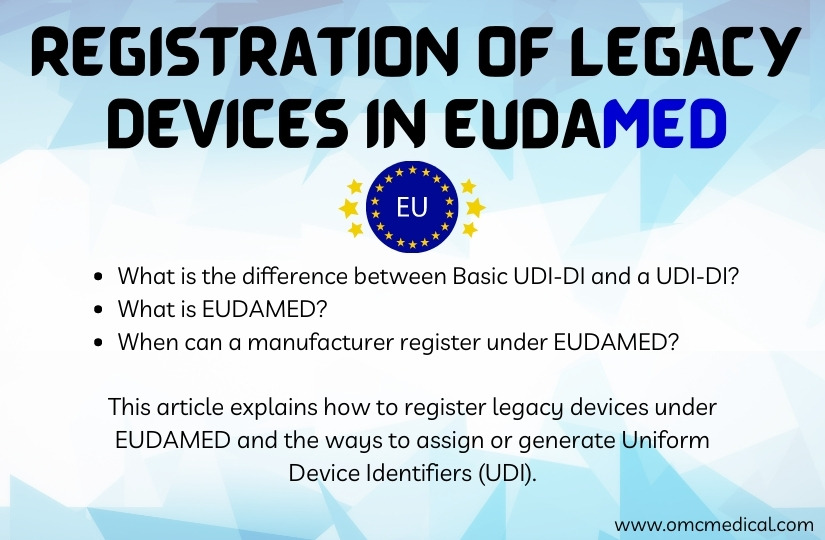EUDAMED
EU REGULATIONS The expert panel in the field of in vitro diagnostic medical devices now accepts submissions from notified bodies for the Performance Evaluation Consultation Procedure | 14 October 2021 To prevent disruption in the supply of these essential healthcare products, the European Commission has proposed a progressive roll-out of the new In Vitro Diagnostic Medical Devices Regulation introducing substantial changes in the regulatory framework for in vitro diagnostic medical devices, such...
Registration of Legacy Devices in EUDAMED
Legacy Devices are the medical devices covered by a valid Directive certificate under Directive 93/42/EEC or Directive 90/385/EEC and continue to be placed on the market after the date of application of Regulation (EU) 2017/745 (MDR). Those devices should be registered under EUDAMED without Basic UDI-DI and a UDI-DI within 18 months after the application is placed or 24 months if the EUDAMED is not fully functional before the date of application. This registration is mandatory for the manufactur...
Search
Tags
510(K) submissionAbbreviated 510(K)Annex XIVCanadaCFRClinical DataClinical evaluationClinical InvestigationCosmetic RegulationCosmeticscybersecurityDecember NewsletterEUEUDAMEDEU IVDREU MDREUMDRFDAFSCAGMPHealth CanadaISOIVDRLabellingManufacturerMarket surveillanceMDCGMDDMDRMedical deviceMedical Device RegistrationMedical devicesMedical Devices Regulatory ConsultancyNotified bodiesPost-market surveillancePost Market Surveillance (PMS)QMSRegulationsrisk assessmentSaMDSaudi ArabiaSFDATechnical DocumentationUKUKRP
Quick Contact
If you have any questions or need help, feel free to contact with our team.
©2025 OMC Medical, All Rights Reserved. With Love by 7oroof.com

Our team will be happy to respond your queries. Contact us directly with your questions or for scheduling FREE consultation and we’ll be in touch as soon as possible.
Quick Contact
If you have any questions or need help, feel free to contact with our team.

Our team will be happy to respond your queries. Contact us directly with your questions or for scheduling FREE consultation and we’ll be in touch as soon as possible.
Quick contact
- info@omcmedical.co.uk
-
0044 7719761764
0044 2080667260 - Planet House, North Heath Lane, Horsham, West Sussex RH12 5QE

Our team will be happy to respond your queries. Contact us directly with your questions or for scheduling FREE consultation and we’ll be in touch as soon as possible.
Our Branches
- Switzerland
- Europe (Northern Ireland)
- Asia
- Canada
- Brazil
- Middle East
- China
- Turkey (Partner Office)

To launch a medical device in a country, medical devices must comply with the local country’s regulatory requirements. Let us be your trusted partner in bringing your medical devices to the Global market. Contact us today to learn more about how we can assist you in every step of the way.
Our Branches
- Europe
- Asia
- Africa
- Oceania
- South America
- North America
- Planet House, North Heath Lane, Horsham, West Sussex RH12 5QE
- Planet House, North Heath Lane, Horsham, West Sussex RH12 5QE
Copyright © 2025 OMC Medical. All Rights Reserved OMC Medical



